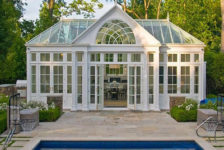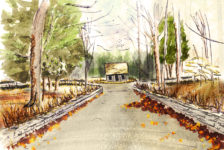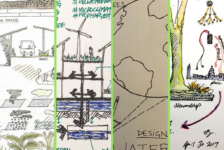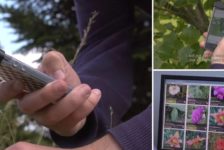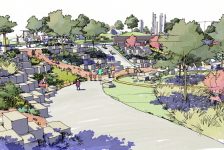Friendship, like all living things, requires regular tending to keep it thriving. And the Royce Pollard Japanese Friendship Garden in Clark College, Vancouver, does just that — strengthening the bonds of friendship and symbolizing life and beauty between Japan and the city of Vancouver. The garden is a gift from Dr. Chihiro Kanagawa, CEO of Shin-Etsu Chemical Company, the parent company of SEH America. For its construction, he made a whopping $1 million donation and named the friendship garden in honor of former Vancouver Mayor Royce E. Pollard. Kanagawa called the garden a “lasting symbol of close friendship beyond business that has matured over the years with this city.” Design Features Murase Associates has designed the garden to create a meditative and peaceful pausing place on an otherwise busy campus. The design incorporates a stand of 100 Shirofugen cherry trees donated and planted in the main college campus in 1990. The garden includes three other tree types: Japanese black pine, cherry, and Japanese maple. Unlike the fruit-bearing cherry trees most have come to know, Shirofugen flower every mid-to-late spring with white blooms that age to blush. The flowering cherry tree, or “sakura,” has symbolized human life and the transformation of culture through time. According to Herbert Orange, a horticulture teacher from Clark College, plants from Japan grow well in this area because Japan and Vancouver are at the same latitude, and thus share a similar climate. Traditional Japanese gardens mimic various aspects of nature. The garden’s design symbolically represents mountains, rivers, and landforms. The inspiration for the concepts derives from the natural features of the Pacific Northwest of the United States, such as the Columbia River and the Columbia Gorge. These inspirations are also gracefully intertwined with Japan’s philosophical and cultural allusions. The garden has a concrete defining pathway that connects the featured spaces. Its existence through the middle evokes the representation of the meandering flow of the Columbia River. The raised grassy bank imitates the topography of the landforms. whereas the sitting areas are set back in the garden, away from the path, to represent the side streams. Stones are an integral element in the garden. The use of stones in a Japanese garden is a fundamental element that can be traced back to prehistoric times. The vertical grouping of stones composed of weathered basalt is representation of the exposed basalt formations of the Columbia Gorge. The garden also contains a stone sculpture; the basalt stone from which it was made is called Datekanmuri Ishi, and comes from a quarry in Japan. The form is representative of a mountain with a single pine tree that is also planted in the vicinity. The one pine and sculpture grouping represents Horai, the mythic mountain of Chinese legend, believed to be the home of the immortals. The circular sitting area, composed of black granite from India, is referred to as the infinity circle. The form of the feature was inspired by black and white Japanese calligraphy called Ensō, which means the universe and the void in Japanese. Emotions Evoked When we enter a Japanese garden, the desired effect is to realize a sense of peace, harmony, and tranquility and to experience the feeling of being a part of nature. In a deep sense, the Japanese garden is a living reflection of the long history and traditional culture of Japan. There is always “something more” in these compositions of stone, water, and plants than what meets the eye, reflecting heavily with this project and screaming with hidden notions, yet the design is graceful and elegant in form. The Royce E. Pollard Japanese Friendship Garden reflects cross-cultural connections and honors the ties between the City of Vancouver and Japan — past, present, and future: “The world has become so small that we have to understand other cultures,” said Pollard. “This is our attempt to foster that.” Article written by Win Phyo
Published in BlogA Gift of Beauty and Friendship – Royce Pollard Japanese Friendship Garden







